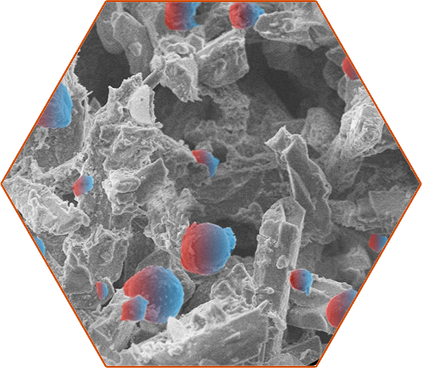A phase change for the better
PCMs Explained
PCMs (phase change materials) are materials that undergo a phase change transition from solid to liquid and liquid to solid to absorb or release large amounts of latent heat at a relatively constant temperature.
Heat Storage
- Environmental temperature rises
- Phase changing material becomes liquid
- Managed temperature remains constant
Heat Release
- Environmental temperature falls
- Phase changing material becomes solid
- Managed temperature remains constant


Reduce Energy Demand
Essentially, PCMs work in the same way as a material with thermal mass - capturing and releasing energy to smooth out peaks and troughs of the heating and cooling cycle. By removing these peaks and troughs, often as a result of air conditioning systems, phase change materials manage the internal temperatures more effectively and efficiently to provide a comfortable working temperature throughout the day.
- Increasing thermal mass Phase Change Materials are a lightweight solution for thermal mass that can be up to 9 x lighter than heavy density concrete.
- A comfortable working temperature PCMs smooth out temperature peaks of a building resulting in an improved working environment.
ThermaCool® Innovation
Through this natural process of phase change, we have used the technology in our ThermaCool® wall and ceiling products, giving both thermal mass to lightweight structures and also significantly reducing the energy demand of climate control systems.
For use in both new build construction and retrofit of commercial and residential buildings, our ThermaCool® products reduce the energy consumption of climate control systems. Our products offer competitively priced, easy to install solutions that yield significant energy and carbon savings for your building.
